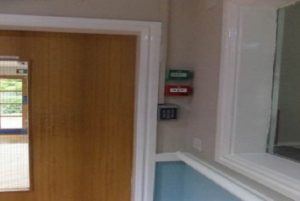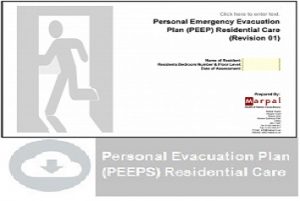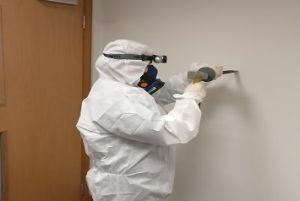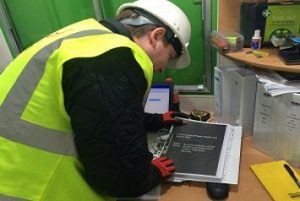-
 10th March 2017
10th March 2017On a construction project where there is likely to be more than one trade Contractor, the Client has a duty to appoint a Principal Designer. The primary role of the Principal Designer is to coordinate the health and safety aspects of the pre-construction phase. Sometimes it is difficult to know who should take on this…
-
 8th March 2017
8th March 2017The purpose of an Asbestos Management Survey is to locate and assess the condition, as far as reasonably practicable, the presence and extent of Asbestos Containing Materials (ACMs) within non-domestic properties constructed before the year 2000, which could be damaged or disturbed during normal occupancy and foreseeable maintenance works. A Management Survey may include some…
-
 3rd March 2017
3rd March 2017The residents of Care Homes are often frail and elderly and may suffer from neurological impairments such as dementia, resulting in them being unable to recognise the risk of harm associated with falling down stairs or accessing unsafe and unfamiliar external areas. To protect residents from harm, it is likely that access to staircases and…
-
 28th February 2017
28th February 2017Although Asbestos has been banned from being used in the UK, there are still many buildings built or refurbished prior to 2000 which may contain it. With approximately 20 tradespeople losing their lives every week as a result of past exposure to asbestos, it is the single greatest cause of work-related deaths in the UK….
-
 16th February 2017
16th February 2017What is Pre Construction Information? In its simplistic terms, Pre-Construction Information is the information required to allow safe designs to be developed and enable the Principal Contractor to plan and manage the construction phase of the project. Who is responsible for Pre Construction Information? On a project where there is likely to be more than…
-
 6th February 2017
6th February 2017In the event of a fire, Care Home residents are unlikely to be able to make their own way to a place of relative safety due to physical or neurological impairment. PEEPs (Personal Emergency Evacuation Plans) are intended to identify the evacuation equipment required and the level of staff assistance necessary to evacuate a resident,…
-
 27th January 2017
27th January 2017Do I need an Asbestos Survey? If you are a building owner, an employer or you are responsible for having works carried out on your premises (construction, maintenance or repair works), you have a legal duty to manage any asbestos in it, so as to protect people from the exposure to asbestos fibres (Regulation 4…
-
 19th January 2017
19th January 2017Under the Construction (Design & Management) Regulations 2015, a Construction Phase Plan is required for ALL projects. Where there is more than one Contractor working on a project, this becomes the responsibility of the Principal Contractor. The Principal Contractor is responsible for planning, managing and monitoring the construction phase of the project. In doing so,…
-
 12th January 2017
12th January 2017Carrying out Fire Risk Assessments within Schools, Colleges and Universities can be difficult and complex, as many educational establishments incorporate facilities such as science blocks, food technology rooms, practical based learning (i.e. workshops) etc, all of which create a higher risk environment where there is a greater exposure to fire hazards. Outlined below are some…
-
 9th January 2017
9th January 2017The CDM Regulations 2015 came into force on 6th April 2015 and replaced the CDM Regulations 2007; these being the main set of regulations for managing the health, safety and welfare on construction projects. The CDM Regulations apply to all building and construction work and includes new build, demolition, refurbishment, extensions, conversions, repair and maintenance,…
Working Together To Improve Construction Health & Safety

